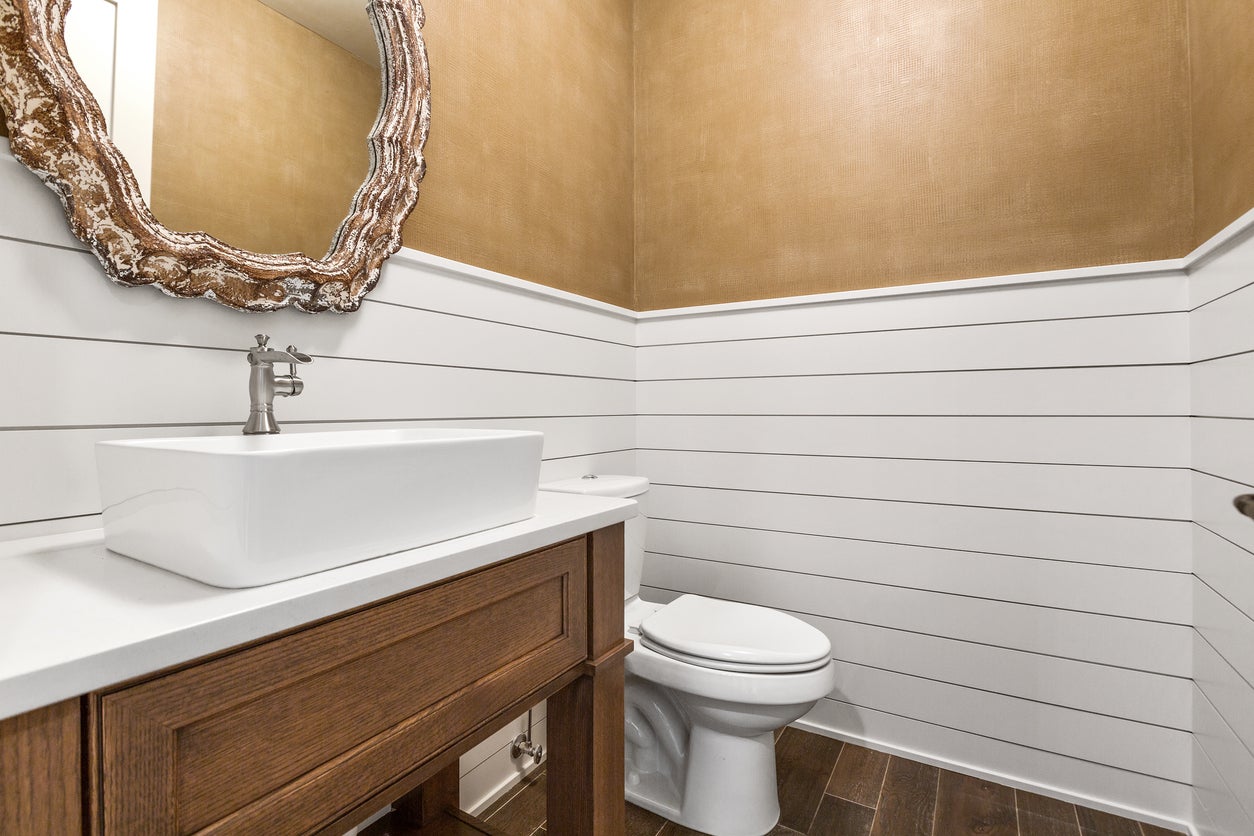
SPLASH INTO SUMMER AND SAVE! Offering Design Studio Credit or 5.99% Rate Buydowns. Click for details.

March 29, 2021
Bathrooms are an important part of the home, however some homes are not equipped with enough bathrooms. Not only do they serve a purpose for you and your family members but they also add value to the home. On average, adding a half bath to your home can increase the value 10.5 percent, overall making it a great investment. The addition can also improve your lifestyle, giving your family and guests the extra personal space they need for quick cleanups and toilet breaks.
Adding a half bath to a home is a common want home builders receive and a remodelers request. People want to increase the value of their houses, but they also are looking for a bathroom that's convenient for their guests to use without compromising anyone's privacy. You may not know where to start designing your new half bath. Here are some guidelines on how to size your half bath and the best location to place it in your home.
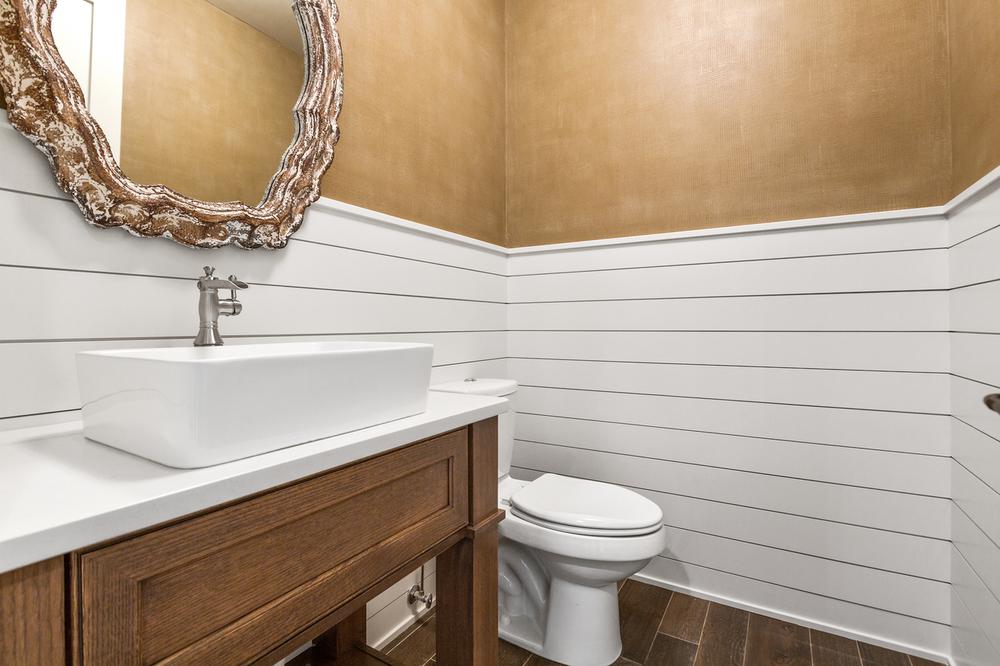
A half bath will typically have, at minimum; a toilet, sink, and a mirror. Having an under-sink cabinet or another storage area for extra tissue paper, hand towels, and soap is nice, but if space is tight, these items can be stashed elsewhere. If you have the space in your half-bath, consider adding a dresser-like vanity for extra storage. One of the first decisions you need to make is where your half bath will be in the home.
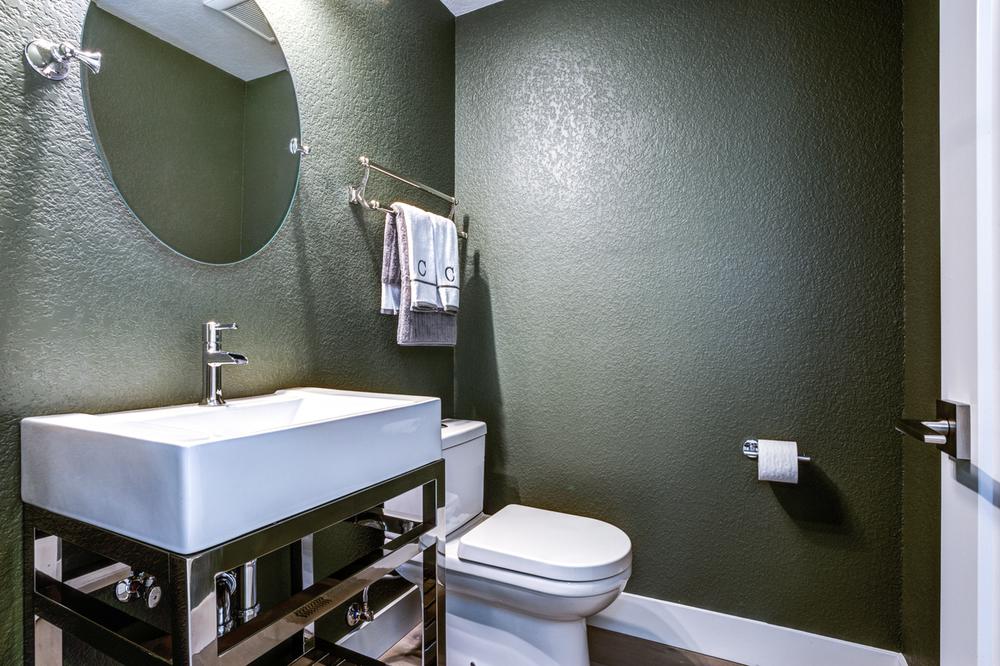
Remember that half baths only require a toilet and sink/vanity, so you may be surprised by how little space is necessary. Depending on your house's layout, there are several ways to add a half bath by carving out space from your existing floor plan. In most homes, you can convert a walk-in closet into a powder room. Or, you can utilize space from another room of the house, such as an extra bedroom or utility room. You can also add a half bathroom into a hallway or under a staircase depending on your home's floor plan.
Another possibility if you don’t have extra space is fitting a half bath into an oversized storage closet or splitting a large full bathroom into a half-bath and a smaller full bath. No matter where you decide to put it, there are a few key factors you should keep in mind as you're planning this common renovation project. When selecting the location, make sure to consider the bathroom’s function. Because guests may mainly use it, you will want the half bath in a central location close to the kitchen and family rooms. Finally, since plumbing is already in place in bathrooms, kitchens, and utility rooms, adding a half bath near these locations is wise.
A half bath does not need to be large. You will have enough space if you can find a spot in your house that's about 3 to 4 feet wide and 5 to 7 feet long, typically seen 3 feet by 5 feet. If it's any smaller, it will be uncomfortable for people to access. A larger half bath is unnecessary, and it's not likely that you'd find that much "extra" unused space in your house.
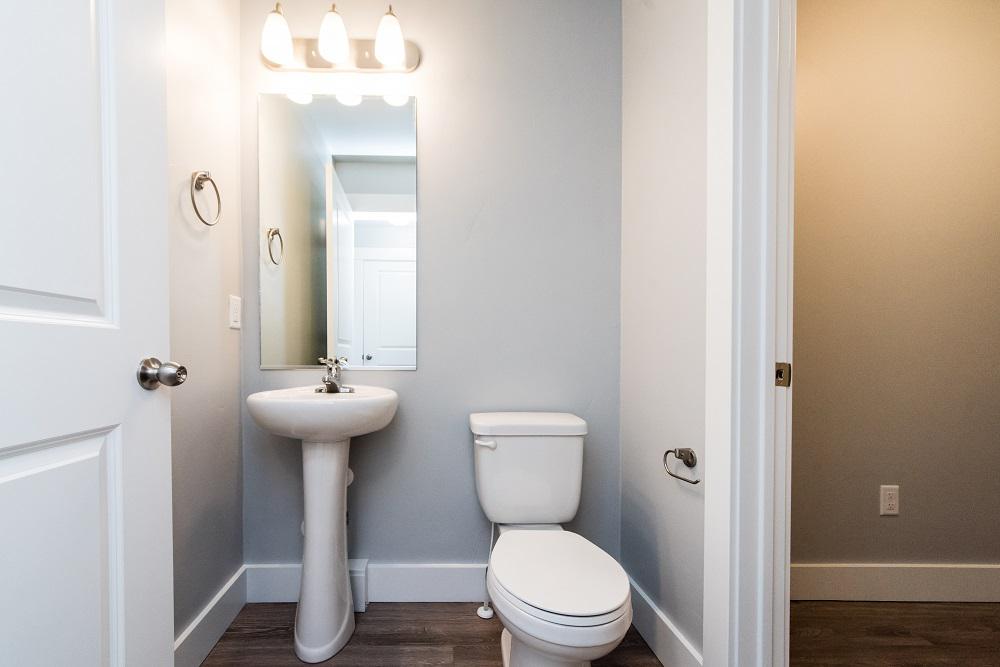
A half bath needs to have running water as well as drainage and ventilation. For budget reasons, try to locate your new half bath as close to existing water and sewer connections as possible. One of the more affordable options is to place it where it can share a wall with an existing bathroom. For older houses built on piers or over basements, new plumbing lines can be placed below the main floor fairly easily. Houses built on slab foundations, though, will require some jackhammering and patching of the slab to connect existing plumbing lines to the new space, which adds to the project's cost. We recommend working closely with a plumbing contractor if you're not confident in your plumbing skills or in a new home communicating the desire for a half-bath early on in the design process.
Now that you know where your half bath will be, you can begin choosing the fixtures in your bath. Where possible, fixtures, including sinks, should be hooked to existing plumbing lines. The good news is powder rooms tend to be used less frequently, meaning you can choose more delicate (and often more visually appealing) fixtures. Other than choosing fixtures and running plumbing connections, you will also need to choose and install a toilet and sink.
To ensure you follow code properly, the toilet must be installed with a minimum of 30 inches of sitting space. If floor space is an issue, consider a wall-mounted toilet and pedestal sink. If you have the space, opt for a traditional-style toilet and sink/vanity with storage. Many vanity designs are available, in ranging styles and sizes, which will create the functional half bath you want and need. A vessel sink, which sits on top of a vanity like a bowl, adds a modern feel to your bathroom while providing you with a countertop surface and storage space underneath.
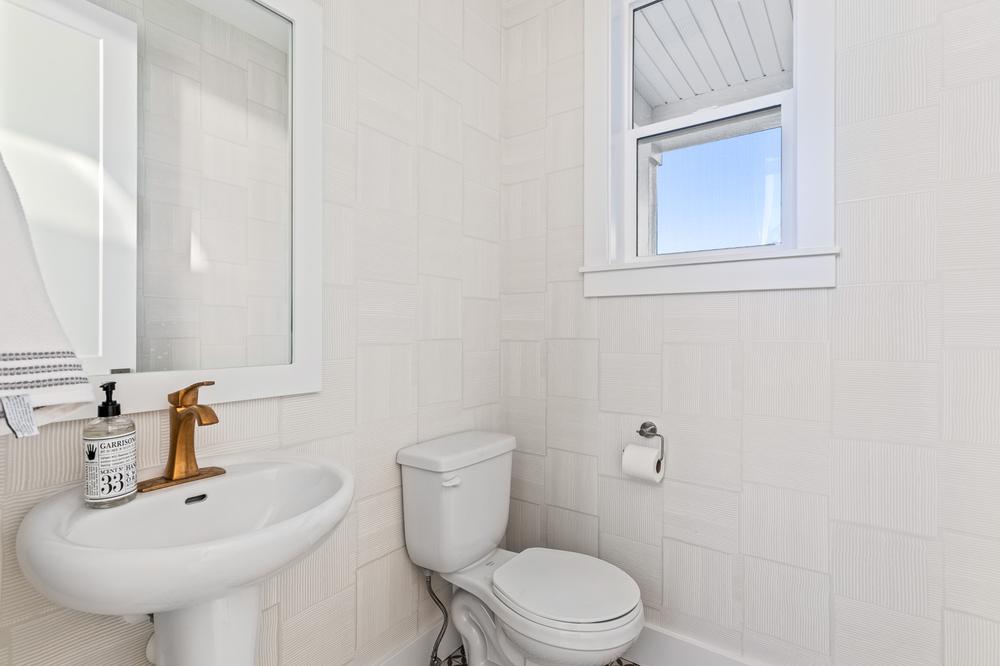
Since you are turning a space in your home into a bathroom, there will be required electrical and ventilation updates. First, your half bath will need lighting, whether you choose one light fixture over the vanity mirror or a mirror light and an overhead light fixture. Code requires a GFCI outlet in the bathroom to provide extra protection against shock in wet areas of the home. This outlet should be within 36 inches of the sink vanity. These requirements are a consideration for older homes that may not have up-to-code electrical or ventilation systems.
Even though you have no shower or bathtub, the toilet and sink will add moisture to the space, so the half bath will require some ventilation. Current codes require either an operable window or an exhaust vent in every bathroom to properly ventilate the space. If the half bath will not have a window, an exhaust/bath fan is necessary to help ventilate the space while staying up to code.
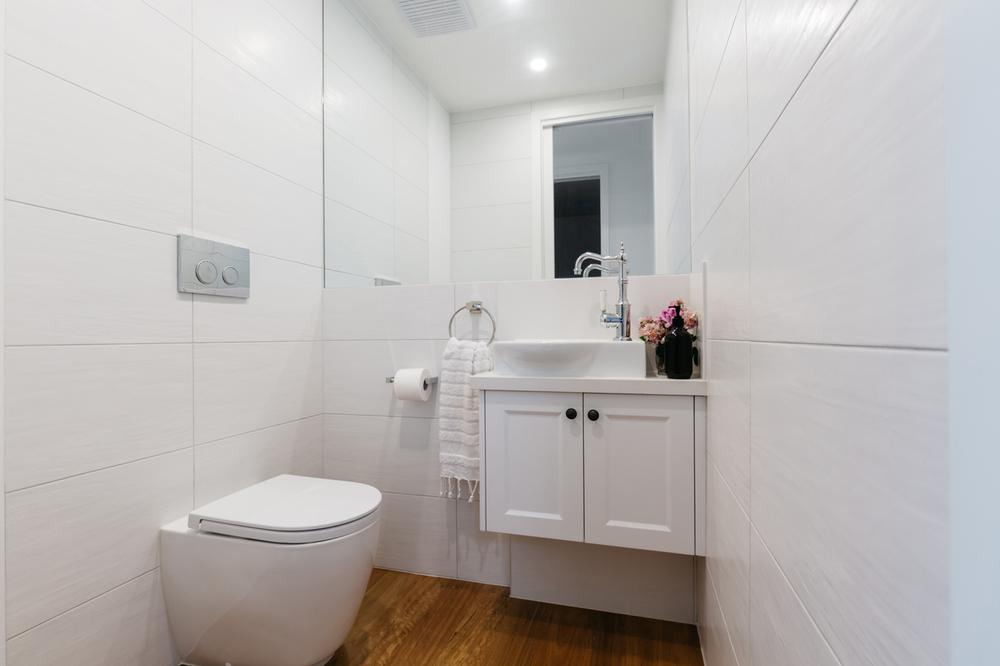
When it comes to using a restroom there are two elements that become necessities; privacy and sound barriers. Adequate sound insulation is a key concern for any bathroom, but becomes especially important for half baths near living or dining areas where you may be entertaining guests. This can be accomplished inexpensively by adding sound insulation in a shared wall or by wrapping water pipes, vents, and drains with a sound-absorptive material before closing up the walls.
Many people prefer to enter and exit the bathroom with some degree of privacy. If possible, locate the half bath's entry so it's not directly in sight of adjacent living spaces, or shield it from view so that guests can come and go discreetly. You may be able to solve this problem simply with a strategically placed screen or room divider or by rearranging furniture in the nearby room so that seating faces away from the door.
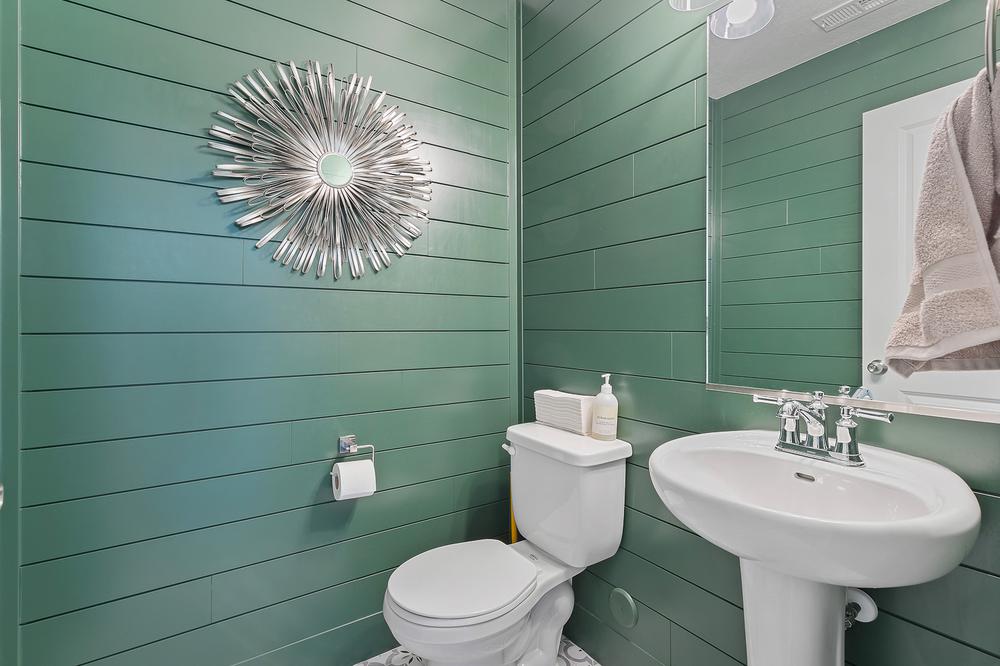
Adding a half-bath to your home will not only add value to your investment but will improve the comfort for each individual in your home. Whether you are looking to remodel your current home to add a half-bath or seeking a new home for your family with a half-bath we hope this guide was helpful. Ready to embark on a new home journey for your family to grow and create memories in? We are ready to assist you. Start by filling out the form below, calling (435) 228-4702 or browse our design galleries for more inspiration!
The post The Trusted Guide to Building a Functional Half Bath appeared first on Visionary Homes.